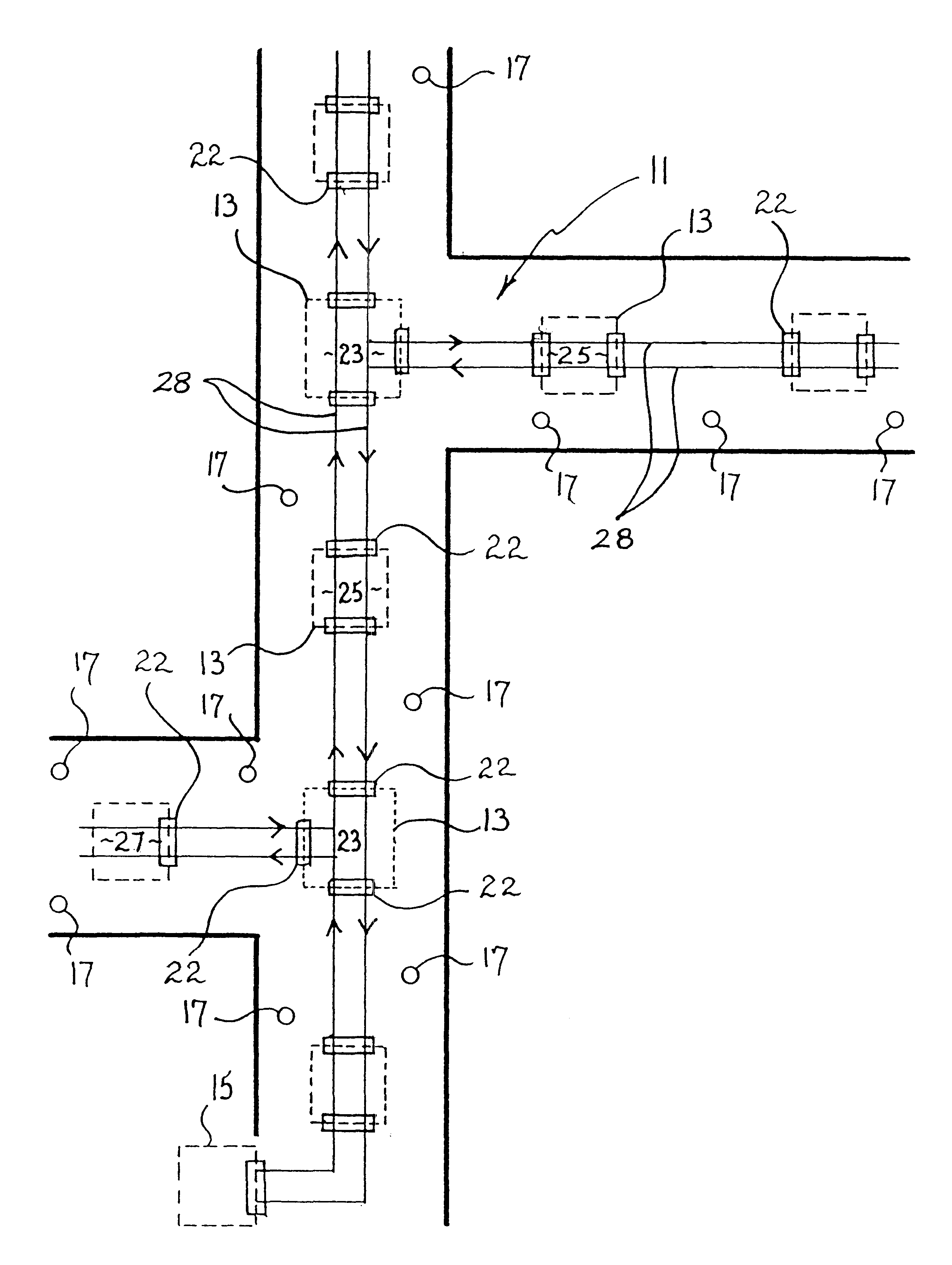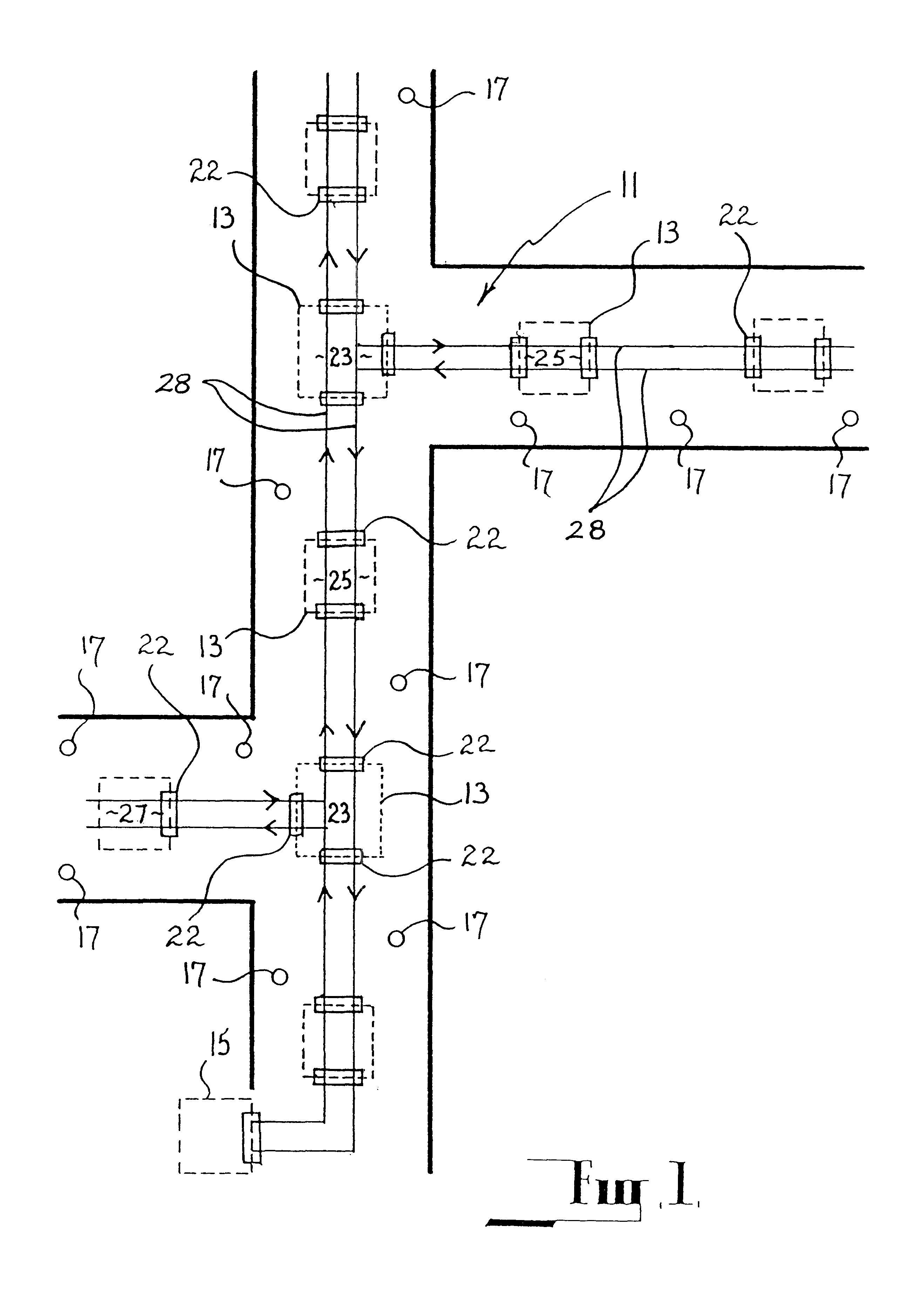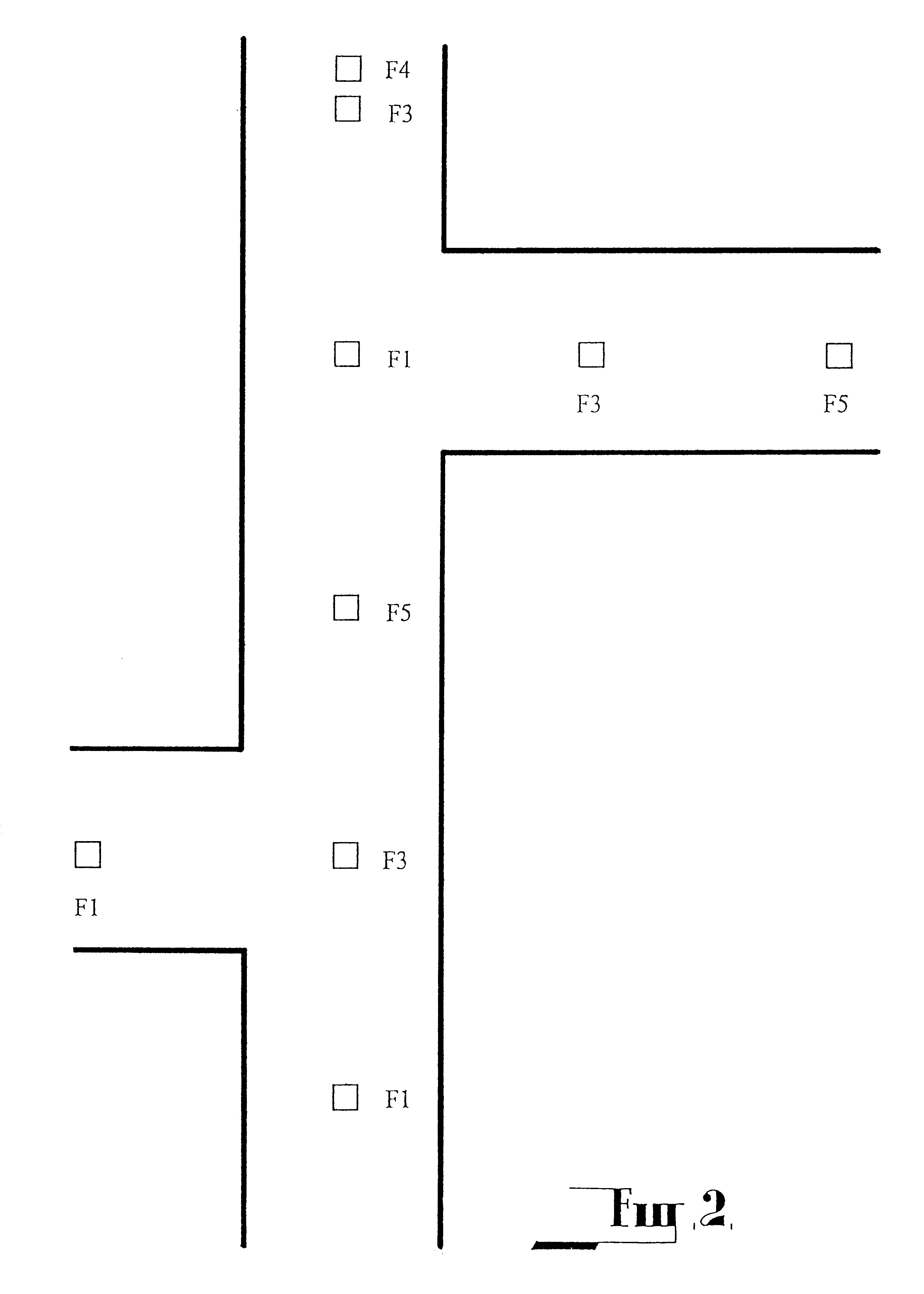Cellular communications network
a technology of cellular communication network and communication network, applied in the field of cellular communication network and method, can solve the problems of only supporting one or two voice channels, remains expensive, and is too sensitive to rock composition for reliable transmission, so as to improve operational efficiency and flexibility, and reduce costs.
- Summary
- Abstract
- Description
- Claims
- Application Information
AI Technical Summary
Benefits of technology
Problems solved by technology
Method used
Image
Examples
Embodiment Construction
The embodiment is directed towards a wide band radio communication network and method for communicating for sub-surface applications specifically concerned with an underground mine, which network is capable of handling and monitoring multiple channels of two way voice, data, control and video signals.
As shown in FIG. 1, the network generally comprises a segmentable ring structure 11 which has a plurality of serially interconnected and cascaded base stations 13, one base station being a network controller 15, a plurality of portables 17, a network protocol 19 (FIG. 3) for communicating between the base stations, and a common air interface protocol 21 (FIGS. 4 and 5) for communicating between a portable and a base station.
The coverage area of the mine is divided into individual zones or cells, whereby one or more slave base stations 13, each define a discrete cell for relaying signals along the network 11 as well as serving portables 17 moving through or stationed within a cell.
A base...
PUM
 Login to view more
Login to view more Abstract
Description
Claims
Application Information
 Login to view more
Login to view more - R&D Engineer
- R&D Manager
- IP Professional
- Industry Leading Data Capabilities
- Powerful AI technology
- Patent DNA Extraction
Browse by: Latest US Patents, China's latest patents, Technical Efficacy Thesaurus, Application Domain, Technology Topic.
© 2024 PatSnap. All rights reserved.Legal|Privacy policy|Modern Slavery Act Transparency Statement|Sitemap



